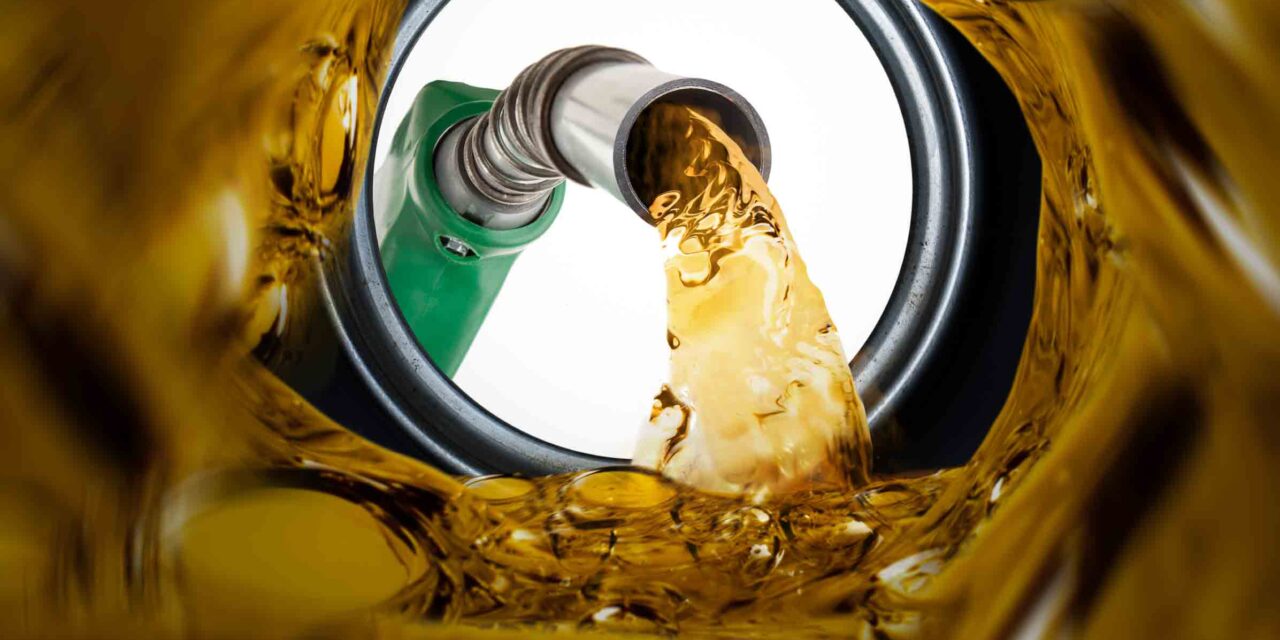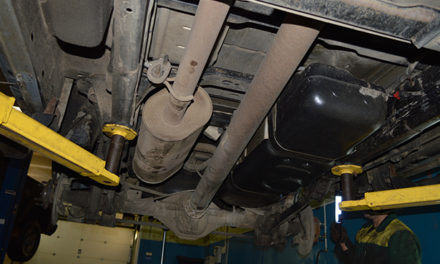The automotive fuel pump has a singular function — to move the fuel from the fuel tank to the engine. There are two types of fuel pumps: mechanical and electrical. The older style mechanical pump supports fuel delivery to a carburetor-operated fuel system, whereas most electric fuel pumps support fuel injection systems. Each pump’s mission is similar, but their design and method of operation differ considerably. In either case, the pump must be capable of maintaining constant pressure and volume as required by the engine to operate efficiently.
A weak or failing fuel pump causes a host of drivability issues. Poor acceleration, rough idle, sputtering, dead spots or hesitation, hard starting, and complete engine shutdown are all symptoms of fuel pump or fuel delivery problems. With this in mind, a good working knowledge of fuel pumps, symptoms signaling a potential failure, and method of repair can lower the odds of being blindsided by a failure.
Mechanical Fuel Pump
The mechanical fuel pump’s operation is reliant on the up-and-down movement of a lever, very much like that of a well pump handle. The pump lever’s movement acts on a rubber diaphragm used to create the vacuum pressure necessary to move the fuel.
Mechanical fuel pumps operate at a low 3.5 to 9 PSI of fuel pressure, with the main emphasis on volume (GPH) rather than pressure. The pump chosen for a particular engine must provide sufficient volume to accommodate the expected fuel flow for the size of the engine in cubic inches.
Symptoms of Impending Failure
- Heavy smell of fuel
- Engine fails to start
- Rapping noise from the pump due to pressure arm pivot failure
- Bottom of the pump covered in fuel or oil
Confirming a Fuel Pump Failure
To check to see if a mechanical pump has failed you will need to conduct a fuel pressure and volume test.
Fuel Pump Compatible with Acura TSX 2009-2014 & Ho...
$65.99 (as of April 22, 2024 15:04 GMT -05:00 - More infoProduct prices and availability are accurate as of the date/time indicated and are subject to change. Any price and availability information displayed on [relevant Amazon Site(s), as applicable] at the time of purchase will apply to the purchase of this product.)AP3622S Fuel Pump Assembly for Chevrolet Chevy GMC...
$48.99 (as of April 22, 2024 15:04 GMT -05:00 - More infoProduct prices and availability are accurate as of the date/time indicated and are subject to change. Any price and availability information displayed on [relevant Amazon Site(s), as applicable] at the time of purchase will apply to the purchase of this product.)JDMSPEED 12V Heavy Duty Electric Fuel Pump Replace...
8% OffPHILTOP Electric Fuel Pump Assembly FG0986 Replace...
$47.99 (as of April 22, 2024 15:04 GMT -05:00 - More infoProduct prices and availability are accurate as of the date/time indicated and are subject to change. Any price and availability information displayed on [relevant Amazon Site(s), as applicable] at the time of purchase will apply to the purchase of this product.)Replacing a Mechanical Fuel Pump
These pumps are inexpensive and simple to replace. Use a wrench to remove the two fuel lines at the bottom of the pump. With a socket, remove the two bolts securing it to the engine block and pull straight out. Install it in reverse order.
Electric Fuel Pumps
Most electric fuel pumps are situated in the fuel tank. They are generally in two forms, a plastic module or a metal hanger. Both incorporate the fuel-sending unit as well. The plastic module is not serviceable and must be replaced as a unit, whereas the metal hanger allows the replacement of the pump itself.
These pumps must precisely maintain between 45 to 60 PSI (depending on application) continuously under all load conditions. The same applies to the volume for the fuel injectors to function properly.
An electric fuel pump that is beginning to fail will exhibit recognizable symptoms, while a pump that has failed completely will cause a no-start condition. Some of the symptoms include:
- Rough idle
- Louder than normal pump whine
- Poor acceleration
- Loss of power
- Hard starting
Replacing an Electrical Fuel Pump
Electric fuel pumps are a bit more expensive than their mechanical counterparts and replacing one is more complicated as well. In most cases, the fuel tank must be emptied and dropped down to access the fuel pump.
Keep in mind, a lack-of-fuel scenario on a fuel-injected engine does not necessarily mean the fuel pump itself has failed. Several items can contribute to a pump failure besides the pump itself.
Here’s a tip: Electric fuel pumps are cooled by fuel, so never let the fuel level drop below 1/8th of a tank, which would uncover and overheat the pump. Avoiding this scenario will significantly increase the useful life of the pump.











![[Vehicle Fitment-1]: Compatible with Chevrolet C1500 1996-1999 5.0L/5.7L, C1500 Suburban 1996-1999 5.7L, C2500 1996-1998 5.0L, C2500 1996-2000 5.7L, C2500 Suburban 1996-1999 5.7L, C3500 1996-2000 5.7L, Express 1500 1996-2002 5.0L/5.7L, Express 2500 1...](https://m.media-amazon.com/images/I/51QtKnaDb1L._SL100_.jpg)
![[Vehicle Fitment]: Compatible with Dodge Dakota 1996-2002; Compatible with Jeep Cherokee 1996-2000, TJ 1997-2002, Wrangler 1997-2002---L4 2.5L [Reference Number]: The A-Premium Fuel Injector's reference number: FJ682, MP-50027, MP50027, FJ10247, RL03...](https://m.media-amazon.com/images/I/41I4KNqZPOL._SL100_.jpg)


